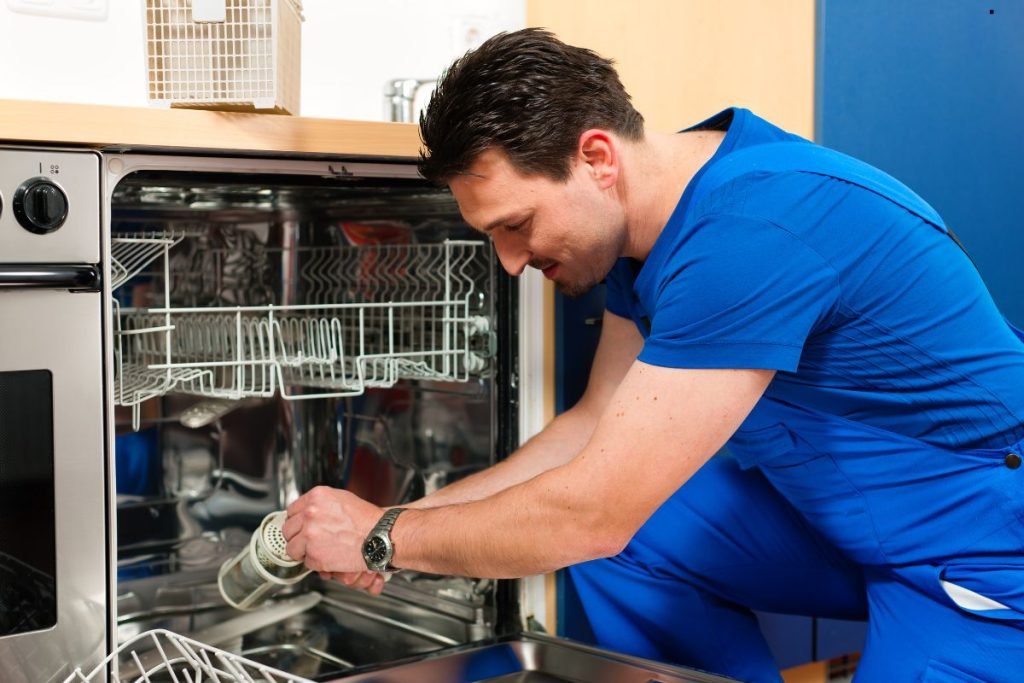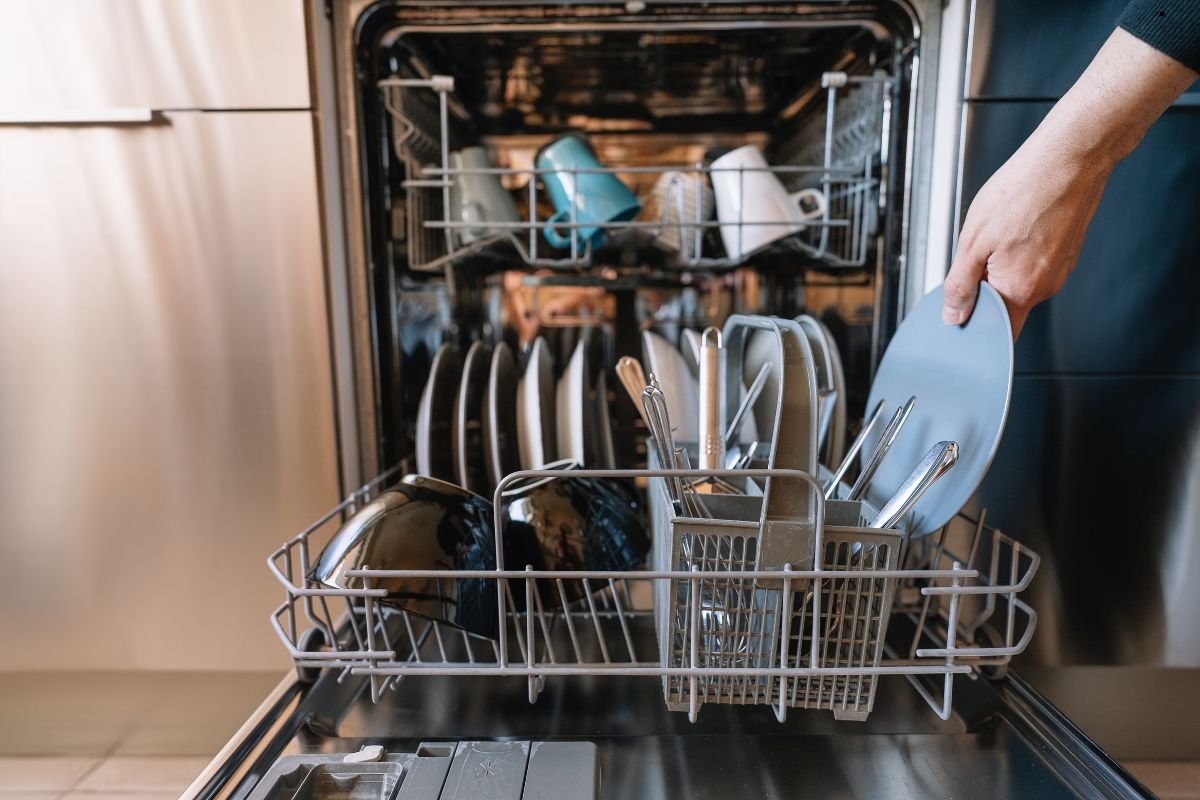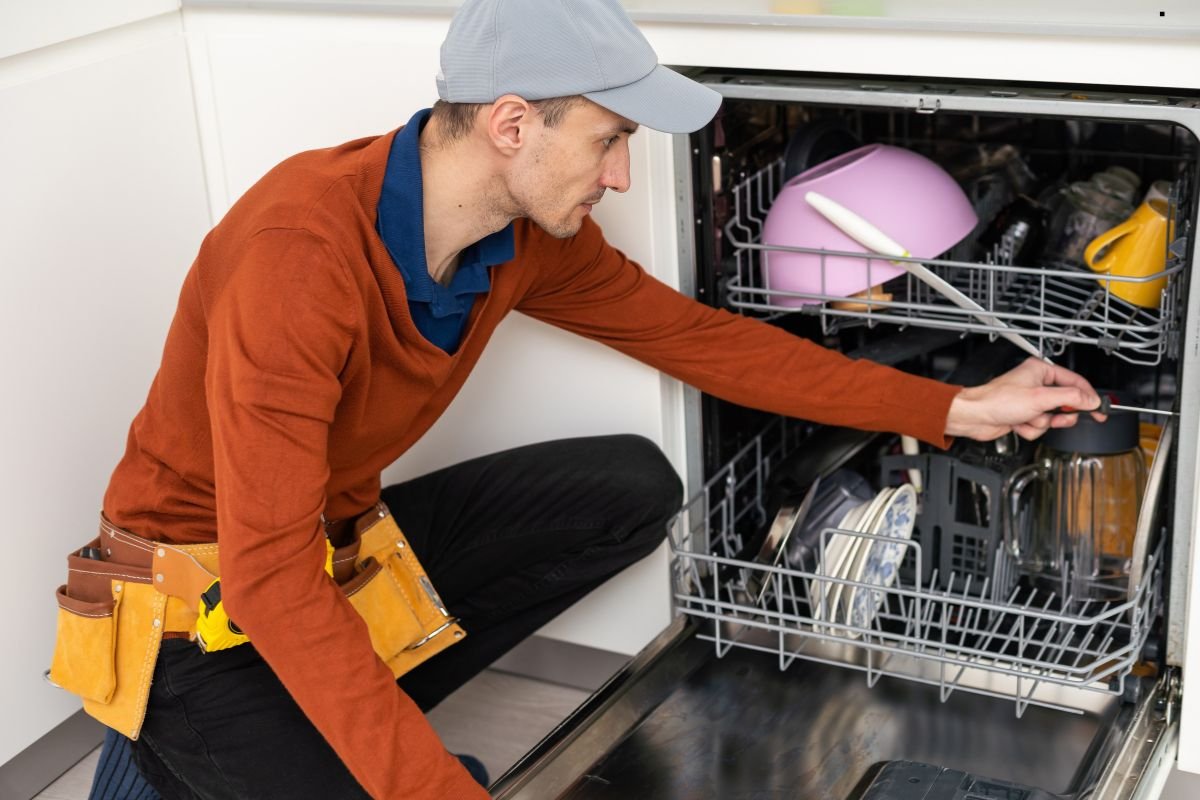
Tired of pulling out wet dishes from your LG dishwasher? You’re not alone! Several factors can contribute to a dishwasher’s inability to properly dry, from simple fixes like using rinse aid correctly to more complex issues like a faulty heating element. This article will walk you through the most common causes of an LG dishwasher not drying dishes effectively and provide solutions you can try yourself.
Understanding Your LG Dishwasher’s Drying System

Your LG dishwasher uses a combination of heat, rinse aid, and air circulation to dry your dishes. The heating element heats the water during the final rinse cycle, and residual heat helps dry the dishes. Rinse aid prevents water spots and enhances drying by allowing water to sheet off the dishes. The vent allows moisture to escape. Issues with any of these components can affect drying performance. Learn more about heating systems with our Heating and Air Conditioning Services.
Common Causes: Rinse Aid Issues
Rinse aid is crucial for effective drying. Without it, water clings to dishes, resulting in spots and wet surfaces.
- Insufficient Rinse Aid Dispensing: Check the rinse aid dispenser and refill it if necessary.
- Incorrect Rinse Aid Setting: The rinse aid dispenser usually has a setting to adjust the amount dispensed. Increase the setting if dishes are consistently wet.
- Using the Wrong Type of Rinse Aid: Use a quality rinse aid specifically designed for dishwashers.
Is your LG dishwasher still leaving dishes wet even after checking the rinse aid? Call us for a fast and reliable solution! We offer affordable dishwasher repair services.”
Loading Issues: Blocking the Heat
Proper loading is more important than many people realize.
- Overcrowding the Dishwasher: Overloading prevents water and heat from reaching all surfaces. Leave space between dishes for proper circulation.
- Improper Dish Placement: Avoid nesting dishes together, and make sure items aren’t blocking the spray arms. Position items so water can easily drain off them.
Water Temperature: Is It Hot Enough?
Hot water is essential for cleaning and drying.
- Water Heater Setting: Ensure your water heater is set to at least 120°F (49°C).
- Incoming Water Temperature: Run the hot water tap in your kitchen sink for a minute before starting the dishwasher to ensure hot water is entering the dishwasher. For more kitchen appliance repair tips, visit our Kitchen Appliances Repair Services.
Still having problems with drying after checking water temperature and loading techniques? Call us We will accurately analyze your problem at Book your dishwasher repair appointment today.
Ventilation Problems: Let the Steam Escape
A blocked vent traps moisture inside the dishwasher, preventing proper drying.
- Clogged or Blocked Dishwasher Vent: Locate the vent (usually on the door) and ensure it’s clean and unobstructed. Check for any blockages inside the vent.
Filter and Drain Issues: Clean Water, Dry Dishes

A clean dishwasher filter and clear drain line are crucial for efficient operation.
- Dirty Dishwasher Filter: Clean the filter regularly (usually once a month) to remove food particles and debris. A clogged filter prevents proper water circulation.
- Clogged Drain Line: A clogged drain line prevents water from draining properly, leaving dishes wet. Check the drain hose for kinks or blockages.
Heating Element Malfunction: The Heat Source
A faulty heating element is a common cause of drying problems.
- Testing the Heating Element: Use a multimeter to test the heating element for continuity. If there’s no continuity, the heating element needs to be replaced. (This requires some technical knowledge, so proceed with caution.)
Fan Motor Problems (if applicable)
Some LG dishwashers have a fan to circulate air for improved drying. If the fan motor isn’t working, drying performance will suffer.
- Testing the Fan Motor: Check the fan motor for obstructions. If it’s clear, use a multimeter to test the motor for continuity. If it’s faulty, the fan motor needs replacing.
Control Panel and Sensor Issues: Electrical Components
In rare cases, problems with the control panel or sensors can affect the drying cycle. These are more complex issues best left to a professional.
Troubleshooting Steps: A DIY Approach
Before calling a repair technician, try these troubleshooting steps:
- Ensure the dishwasher is properly loaded.
- Check and refill the rinse aid dispenser.
- Clean the dishwasher filter.
- Check the water temperature.
- Inspect the dishwasher vent.
When to Call a Professional: Don’t DIY Forever
If you’ve tried the above steps and your LG dishwasher still isn’t drying properly, it’s time to call a qualified appliance repair technician. Electrical component and complex system require experience repair service for resolve any type of problem.
Preventative Maintenance: Keep Your Dishwasher Happy
- Regular Cleaning: Clean your dishwasher regularly with a dishwasher cleaner or a mixture of vinegar and baking soda.
- Proper Loading Habits: Avoid overloading and follow proper loading techniques.
Conclusion: Dry Dishes, Happy Home
Dealing with a dishwasher that won’t dry dishes is frustrating. By understanding the potential causes and trying the troubleshooting steps outlined in this article, you can often resolve the issue yourself. However, if the problem persists, don’t hesitate to seek professional help. A properly functioning dishwasher is essential for a smooth-running kitchen, and contact us we’re here to ensure your LG dishwasher provides years of reliable service..
